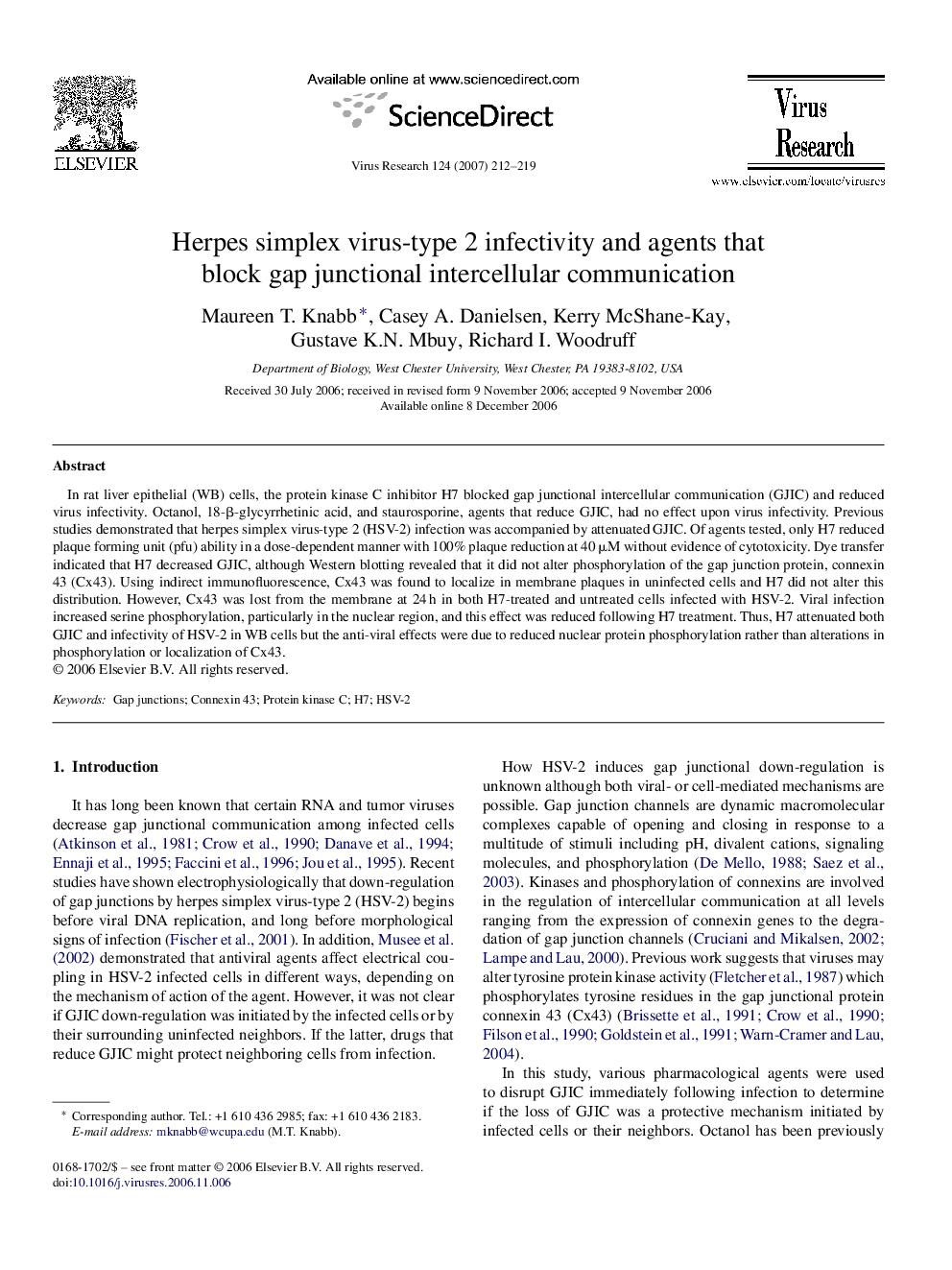| Article ID | Journal | Published Year | Pages | File Type |
|---|---|---|---|---|
| 3430991 | Virus Research | 2007 | 8 Pages |
In rat liver epithelial (WB) cells, the protein kinase C inhibitor H7 blocked gap junctional intercellular communication (GJIC) and reduced virus infectivity. Octanol, 18-β-glycyrrhetinic acid, and staurosporine, agents that reduce GJIC, had no effect upon virus infectivity. Previous studies demonstrated that herpes simplex virus-type 2 (HSV-2) infection was accompanied by attenuated GJIC. Of agents tested, only H7 reduced plaque forming unit (pfu) ability in a dose-dependent manner with 100% plaque reduction at 40 μM without evidence of cytotoxicity. Dye transfer indicated that H7 decreased GJIC, although Western blotting revealed that it did not alter phosphorylation of the gap junction protein, connexin 43 (Cx43). Using indirect immunofluorescence, Cx43 was found to localize in membrane plaques in uninfected cells and H7 did not alter this distribution. However, Cx43 was lost from the membrane at 24 h in both H7-treated and untreated cells infected with HSV-2. Viral infection increased serine phosphorylation, particularly in the nuclear region, and this effect was reduced following H7 treatment. Thus, H7 attenuated both GJIC and infectivity of HSV-2 in WB cells but the anti-viral effects were due to reduced nuclear protein phosphorylation rather than alterations in phosphorylation or localization of Cx43.
